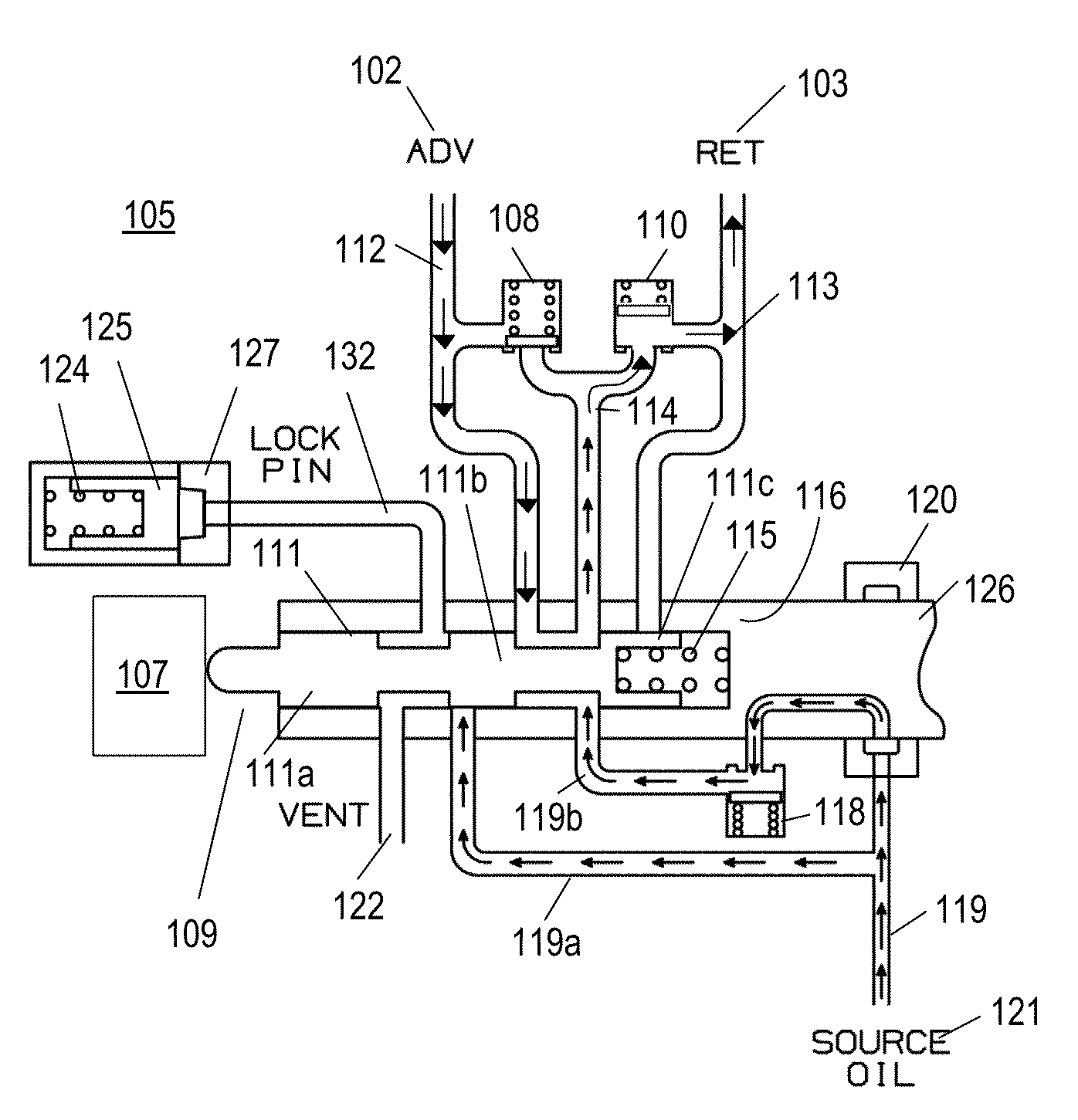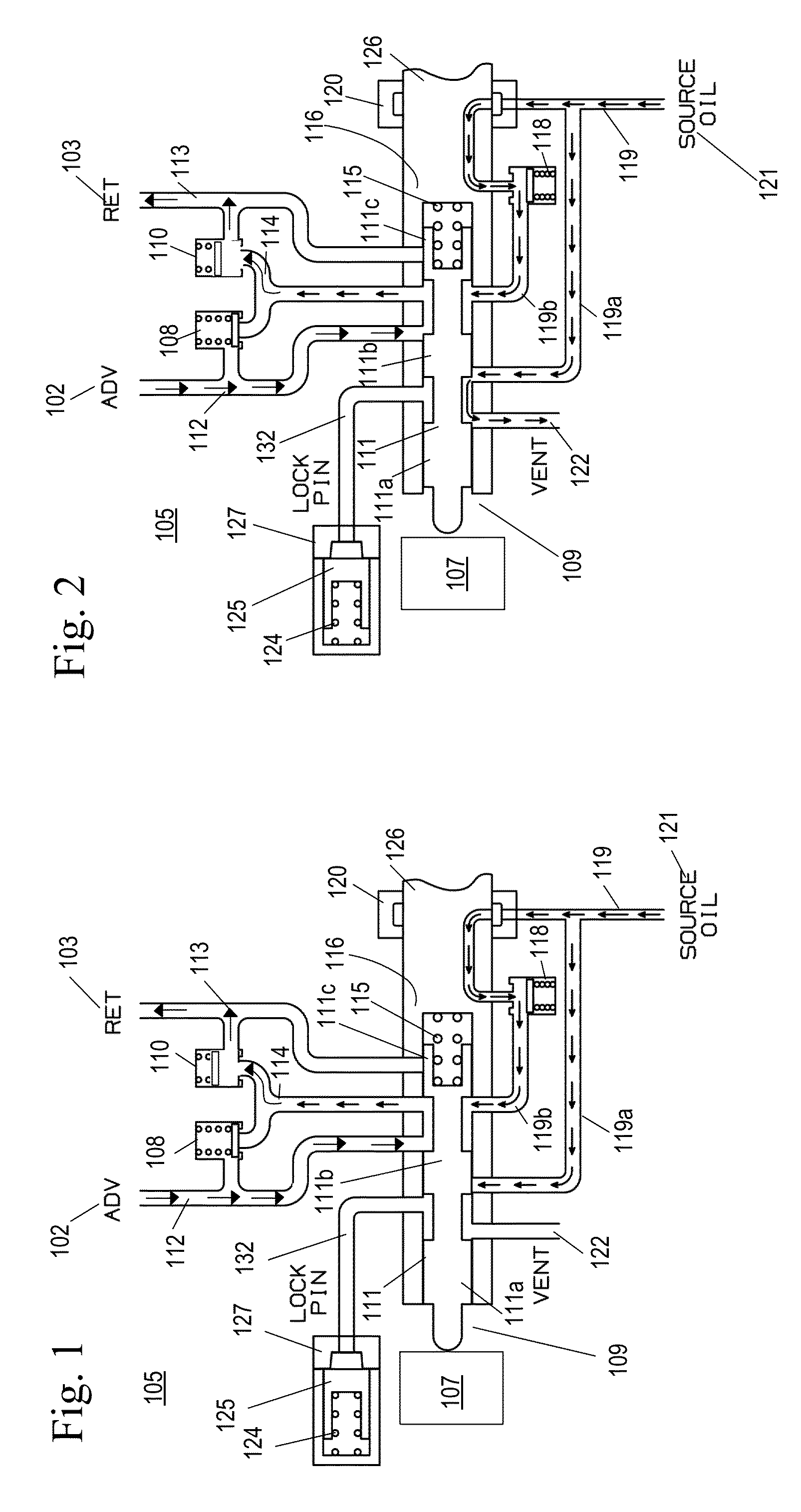Venting mechanism to enhance warming of a variable cam timing mechanism
a technology of variable cam timing and valve body, which is applied in the direction of machines/engines, non-mechanical valves, valve arrangements, etc., can solve the problems of limiting the exchange rate, limiting the oil exchange rate, and reducing the performance of the vct mechanism, so as to reduce the amount of time it takes, improve performance, and reduce the viscosity
- Summary
- Abstract
- Description
- Claims
- Application Information
AI Technical Summary
Benefits of technology
Problems solved by technology
Method used
Image
Examples
first embodiment
[0026]Referring to FIGS. 1-3 of the first embodiment, torque reversals in the camshaft 126 caused by the forces of opening and closing engine valves move the vane 104. The advance and retard chambers 102, 103 are arranged to resist positive and negative torque pulses in the camshaft 126 and are alternatively pressurized by the cam torque. The control valve 109 allows the vane 104 in the phaser to move by permitting fluid flow from the advance chamber 102 to the retard chamber 103 or vice versa, depending on the desired direction of movement.
[0027]The rotor assembly 105 is connected to the camshaft 126 and is coaxially located within the housing assembly 100. The rotor assembly 105 has at least one vane 104 separating a chamber formed between the housing assembly 100 and the rotor assembly 105 into an advance chamber 102 and a retard chamber 103. The vanes 104 are capable of rotation to shift the relative angular position of the housing assembly 100 and the rotor assembly 105.
[0028]A...
fourth embodiment
[0059]FIG. 11 through 13 show schematics of a variable cam timing phaser of a In this embodiment, the control valve 159 of the VCT phaser or mechanism has been shortened such that at a spool out position or at base timing of the phaser, the porting 112 or 113 leading to the chambers 102, 103 is exposed to the back of the control valve 159 which is vented to atmosphere or sump.
[0060]Internal combustion engines have employed various mechanisms to vary the angle between the camshaft and the crankshaft for improved engine performance or reduced emissions. The majority of these variable camshaft timing (VCT) mechanisms use one or more “vane phasers” on the engine camshaft (or camshafts, in a multiple-camshaft engine). In most cases, the phasers have a rotor assembly 105 with one or more vanes 104, mounted to the end of the camshaft 126, surrounded by a housing assembly 100 with the vane chambers into which the vanes fit. It is possible to have the vanes 104 mounted to the housing assemb...
PUM
 Login to View More
Login to View More Abstract
Description
Claims
Application Information
 Login to View More
Login to View More - R&D
- Intellectual Property
- Life Sciences
- Materials
- Tech Scout
- Unparalleled Data Quality
- Higher Quality Content
- 60% Fewer Hallucinations
Browse by: Latest US Patents, China's latest patents, Technical Efficacy Thesaurus, Application Domain, Technology Topic, Popular Technical Reports.
© 2025 PatSnap. All rights reserved.Legal|Privacy policy|Modern Slavery Act Transparency Statement|Sitemap|About US| Contact US: help@patsnap.com



